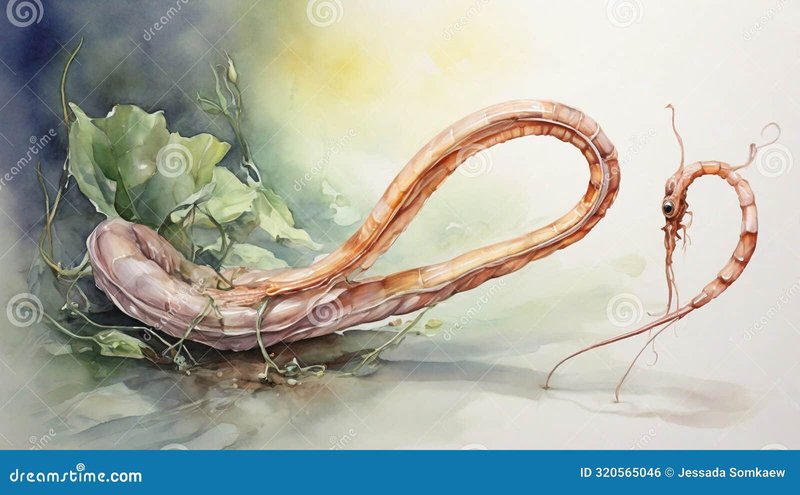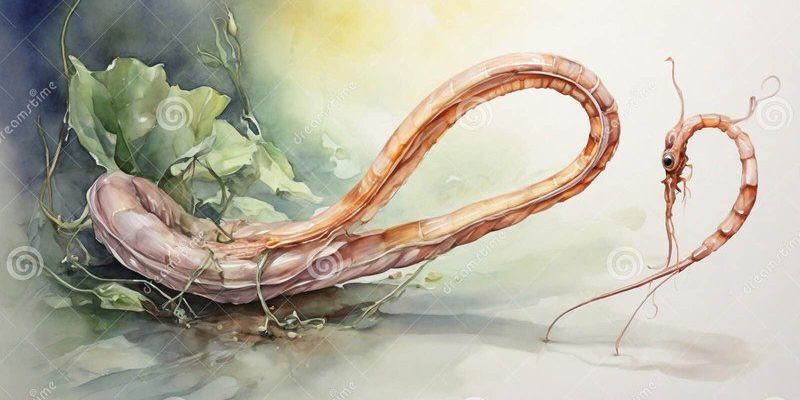
Now, you might be wondering what a proboscis even is. Think of a proboscis as a long, flexible tube or tongue. Ribbon worms use theirs in a way that’s both clever and efficient. Imagine if you could stretch your arm out super far to grab a snack without moving from your spot. That’s pretty much what ribbon worms do with their proboscis! Let’s dive deeper into their world to see just how these remarkable creatures capture dinner.
What Are Ribbon Worms?
Before we get into the juicy details of their hunting methods, it’s good to know what ribbon worms actually are. Ribbon worms are part of the phylum Nemertea, and they can be found in various environments, from shallow coastal waters to deep-sea habitats. Some species can grow to be quite long, with the largest reaching lengths of over 30 feet! Yes, that’s right—a worm as long as a bus.
These worms have a soft, elongated body that often resembles a ribbon, which explains their name. Their vibrant colors can range from bright red to muted brown, allowing them to blend into their surroundings. This makes them less visible to both predators and prey. And while they might look a little like your average worm, they’re actually more closely related to mollusks, like snails and clams.
Understanding the Proboscis
Now, let’s talk about the star of the show: the proboscis. This structure is not only a crucial tool for survival, but it’s also a fascinating example of evolution in action. The proboscis is housed in a special cavity and can be extended and retracted with remarkable speed. Basically, it’s like having a super long, stretchy tongue that can snag food quickly.
The proboscis has a unique construction. It can be filled with fluid, which helps it expand. When the ribbon worm senses potential prey—like small fish or invertebrates—it can shoot this proboscis out in a blink of an eye. Imagine someone launching a lasso to catch a runaway cow; that’s kind of the action we’re talking about here!
How Ribbon Worms Capture Prey
So, how exactly do these worms go about catching their dinner? Here’s where things get really interesting. When a ribbon worm spots a tasty target, it uses its **proboscis** to grab hold of the prey. This process involves a few key steps:
1. **Sensing Prey**: Ribbon worms have chemoreceptors, special cells that help them detect chemicals in the water. This allows them to sense nearby prey even before they can see it.
2. **Launching the Proboscis**: Once they identify a meal, the ribbon worm quickly extends its proboscis at lightning speed. This extension is often accompanied by a sticky substance that helps trap the prey.
3. **Reeling It In**: After capturing the prey, the ribbon worm retracts its proboscis, bringing the caught meal back toward its mouth.
This whole process is quite the sight! Imagine a magician pulling a rabbit out of a hat, only instead of a rabbit, it’s a fish or a shrimp, and instead of a hat, it’s the ocean floor.
The Role of Mucus and Venom
One of the key features that makes ribbon worms such effective predators is the mucus and sometimes venom contained in their proboscis. This isn’t just for show—it plays a crucial role in their hunting technique.
– **Sticky Mucus**: The mucus secreted by the proboscis helps to ensnare prey effectively. It acts almost like glue, ensuring that once the worm catches something, it won’t easily escape.
– **Venom**: Some species have venomous proboscises that can deliver a painful sting or paralyze their prey. While humans typically don’t have to worry about ribbon worm venom, it adds another layer of efficiency to their hunting methods.
This combination of stickiness and toxicity allows ribbon worms to target a variety of prey. They can take down everything from small fish to crustaceans, demonstrating a flexibility in diet that’s essential for survival in the wild.
Adaptations for Survival
Like many creatures, ribbon worms have developed some pretty interesting adaptations that help them thrive in their environments. The proboscis is just one part of a broader set of features that make these worms successfully adapted predators.
– **Camouflage**: Ribbon worms often exhibit colors and patterns that help them blend into their surroundings. This not only makes them harder for prey to spot, but it also protects them from larger predators.
– **Regenerative Abilities**: If ribbon worms lose part of their body or proboscis, they have an impressive ability to regenerate lost sections. This means they can recover from injuries that might be fatal to other creatures.
These adaptations allow ribbon worms to be not just survivors, but effective hunters in their underwater homes—a true testament to nature’s creativity!
Why Ribbon Worms Matter
You might be thinking, “Great, but why should I care about ribbon worms?” Understanding these creatures is important for a few reasons.
First, they play a vital role in the marine ecosystem. By controlling populations of small fish and invertebrates, ribbon worms help maintain a balance in the ocean food web. Their hunting strategies give scientists insight into how different species interact and adapt to their environments.
Second, studying ribbon worms and their proboscis can also help researchers learn more about biological structures. Their unique adaptations might inspire innovations in technology or medical applications, such as developing new materials that mimic their sticky mucus.
By diving into the lives of ribbon worms, we gain a clearer picture of underwater ecosystems and the delicate balance that keeps them thriving.
So, there you have it! Ribbon worms are more than just wiggly creatures hiding in the sand; they are skilled hunters with a fascinating tool at their disposal—their proboscis. From their unique way of capturing prey to their important role in the marine ecosystem, ribbon worms offer a window into the wonders of nature.
Next time you see a ribbon worm or hear about them, you can appreciate not just its appearance but also its incredible adaptations. Nature has a special way of crafting specialized tools for survival, and the ribbon worm’s proboscis is a perfect example of that creativity in action. Keep exploring and learning, because the ocean is full of surprises just waiting to be uncovered!

